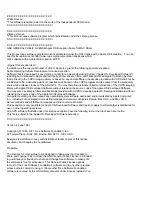
Related Links
Safety instructions
Before working inside your system
Removing a redundant power supply unit
Installing the power interposer board
Installing a redundant power supply unit
After working inside your system
System board
A system board (also known as the motherboard) is the main printed circuit board found in systems. The
system board allows communication between many of the crucial electronic components of the system,
such as the central processing unit (CPU) and memory, and also provides connectors for other
peripherals. Unlike a backplane, a system board contains significant number of sub-systems such as the
processor expansion cards, and other components.
Removing the system board
Prerequisites
CAUTION: Many repairs may only be done by a certified service technician. You should only
perform troubleshooting and simple repairs as authorized in your product documentation, or as
directed by the online or telephone service and support team. Damage due to servicing that is
not authorized by Dell is not covered by your warranty. Read and follow the safety instructions
that are shipped with your product.
CAUTION: If you are using the Trusted Program Module (TPM) with an encryption key, you may
be prompted to create a recovery key during program or System Setup. Be sure to create and
safely store this recovery key. If you replace this system board, you must supply the recovery key
when you restart your system or program before you can access the encrypted data on your hard
drives.
CAUTION: Do not attempt to remove the TPM plug-in module from the system board. Once the
TPM plug-in module is installed, it is cryptographically bound to that specific system board. Any
attempt to remove an installed TPM plug-in module breaks the cryptographic binding, and it
cannot be re-installed or installed on another system board.
1.
Follow the safety guidelines listed in the Safety instructions section.
2.
Follow the procedure listed in the Before working inside your system section.
3.
Keep the Phillips #2 screwdriver ready.
4.
Remove the following:
a.
cooling shroud
b.
memory modules
c.
cooling fan cables
d.
expansion card riser
e.
integrated storage controller card
f.
heat sink and processor
g.
internal dual SD module
Steps
1.
Disconnect all other cables from the system board.
184
















































